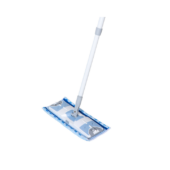In the wake of the COVID-19 pandemic, the vulnerabilities and dependencies within our global supply chain were starkly revealed. The resulting shortages and delays highlighted the intricate and often unseen networks that underpin our daily lives. As businesses strive to build more resilient systems, the distinction between procurement and supply chain management has become increasingly significant. Understanding these differences is crucial for optimizing operations and achieving strategic goals. This article delves into the roles and responsibilities of procurement and supply chain management, explores their interconnections, and examines how their synergy can enhance overall performance.
Definition: Procurement
Find new suppliers and negotiate with existing ones to supply your organization with raw materials, goods, and services. The fundamental objective of procurement is relationship management. Effective procurement teams develop strong internal and external client and supplier relationships to meet operational goals.
Procurement connects finance and departmental stakeholders in larger firms. It gives departments everything they need to make things and provides responsibility and data for budgetary approval.
Lots of people confuse procurement with buying. Many organizations use the terms interchangeably, yet they’re different.
- Identifying organizational needs and activities, forecasting, and arranging resource purchase to fulfill deadlines.
- Managing suppliers from appraisal and onboarding to renewal or termination.
- Negotiating: Benchmarking and leveraging relationships for optimum terms and pricing.
- Contract management: Making sure suppliers deliver on time.
- Receiving goods: Reconciling invoices against the purchase requisition, purchase order, and invoices to assure accuracy and delivery.
- Payment: Approve, code, and process supplier payments quickly.
What is SCM or supply chain management?
A supply chain is a network of suppliers, service providers, logistical partners, and other entities that provide raw materials, create products, and distribute them to customers. While procurement connects upstream suppliers to the business, supply chain management connects the downstream network to promotional and logistics partners who connect the company to its customers.
Supply chain management goes beyond delivery. Delivery is part of supply chain management, albeit only a tiny component. Manufacturing and delivering items to customers is increasingly complicated.
SCM teams handle:
- Inventory management: Tracking raw supplies and completed items. Keeping components in stock to fulfill production deadlines.
- Manufacturing: How raw resources become products and how to improve efficiency.
- Supply chain risk management: Assessing supply chain network stability and supplier ability to deliver items on time and at expected cost.
- Quality control improves product quality and reduces manufacturing defects.
- Logistics services transport finished goods from production sites or wholesale warehouses to retailers and other distribution points. Handling damaged or unwanted goods returns.
What distinguishes procurement from supply chain management?
Procurement and supply chain both aim to boost corporate success, but in different ways. Purchasing is part of the supply chain.
Important distinctions include:
- In production, procurement is “what goes in”. Purchasing specialists aim to buy products and services for utilization. Supply chain management is “what comes out” of materials. Supply chain experts transform raw items and services into products.
- Procurement aids production. Supply chain management produces and distributes items.
- Supply change seeks operational efficiency, while procurement seeks capital efficiency (saving money and improving value).
What links procurement with supply chain management?
Supply chain management and procurement share goals and key tasks. Example: Both departments
Find cost-cutting opportunities
Procurement focuses on expenditure optimization to save money and boost profits. Supply chain efforts focus on improving product quality and value to boost topline.
Procurement and supply chain save money by optimizing spend efficiency on new projects, assessing current projects and contracts to reduce costs, and negotiating pricing and terms to retain supplier and vendor efficiency at renewal time. Use procurement software to automate processes or a good supply chain strategy.
Enhance operating efficiency
Effective procurement management decreases deal research time and time to performance.
Building efficient production and distribution routes speeds up and lowers the cost of delivering goods. Improving these processes on either side saves hundreds of hours in labor wages and boosts manufacturing productivity.
Strengthen supplier relationships
Strong supplier connections are crucial for procurement and supply chain. Improved strategic sourcing with suppliers and distributors can improve price, minimize supplier evaluation time, and streamline products requisitions, order processing, and invoice payment.
Supply chain and procurement collaboration improvements
Progress requires collaboration between procurement and supply chain, which function independently. They are the two legs that propel your company.
Three ways procurement and supply chain can boost performance:
- Better cross-departmental planning: Manufacturing and distribution planning and resource allocation should be teamwork. Interdepartmental alignment can enhance projections, provide a comprehensive perspective of contract conditions and their implications, eliminate capacity and warehousing friction, and speed up raw material acquisition to product delivery.
- Greater data transparency: De-siloing data helps both departments cut lead times, spot patterns, and find cost-saving and efficiency opportunities. Integrated software can show the supply chain management process, helping procurement support supply chain operations and improve production cycle performance.
- Supplier streamlining: Many procurement departments have a well-honed preferred vendor list, but an interdepartmental approach can maximize pricing and terms. This can further minimize order and payment processing time and cost.
In today’s interconnected business environment, the seamless integration of procurement and supply chain management is essential for operational success. While procurement focuses on acquiring the necessary resources and managing supplier relationships, supply chain management ensures the efficient production and distribution of these resources into finished products. Both functions are pivotal in achieving cost efficiency, operational effectiveness, and robust supplier relationships. By fostering collaboration and enhancing data transparency between these departments, businesses can streamline processes, reduce lead times, and uncover new opportunities for savings and efficiency. Ultimately, the alignment of procurement and supply chain management can drive significant improvements in performance, ensuring that companies are better equipped to navigate the complexities of the modern marketplace.

















